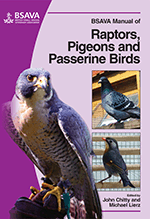
Full text loading...

An accurate history is important to arrive at a diagnosis in a bird with possible gastrointestinal disease. Questions related to recent weight changes and training methods will help to establish the kind of stresses being placed on the bird. This chapter evaluates clinical history, examination and diagnosis; viral enteritis; bacterial enteritis and dysbiosis; clostridium perfringens enterotoxaemia; candidiasis; pancreatic disease; crop fistulae and abscesses; gastrointestinal foreign bodies; peritonitis; and cloacal disease.
Raptors: gastrointestinal tract disease, Page 1 of 1
< Previous page | Next page > /docserver/preview/fulltext/10.22233/9781910443101/9781910443101.23-1.gif

Full text loading...









